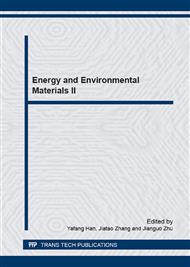p.579
p.583
p.590
p.596
p.601
p.607
p.620
p.625
p.631
Effects of Nutrition on Mild Steel Corrosion by Sulfate Reducing Bacteria under Aerobic Environment
Abstract:
Sulfate reducing bacteria (SRB) are traditionally considered as anaerobic organism. In this paper, the potential of sulfate reducing bacteria to cause mild steel corrosion under aerobic situation was investigated. Natural biopolymer agar and sulfate reducing bacteria cells were used to produce artificial biofilm. Micro-sensors were used to investigate the microenvironment in artificial biofilm. Environmental scanning electron microscopy and energy dispersive spectroscopy were used to study mild steel corrosion covered by artificial biofilm. The results indicated that SRB could grow and reduce sulfate both in suspension and in biofilm. The hydrogen sulfide produced by SRB and mild steel corrosion were influenced by the nutrients in the environment. The concentration of H2S in SRB biofilm exposed to culture medium was as twenty times as that exposed to marine water. The main corrosion product of mild steel in culture medium was iron sulfide, whereas the main product of mild steel in marine water was iron oxide.
Info:
Periodical:
Pages:
625-630
Citation:
Online since:
March 2015
Authors:
Price:
Сopyright:
© 2015 Trans Tech Publications Ltd. All Rights Reserved
Share:
Citation:


